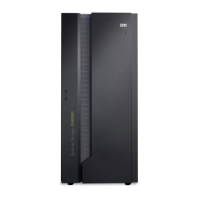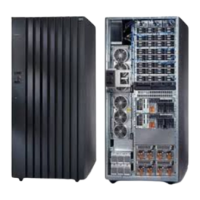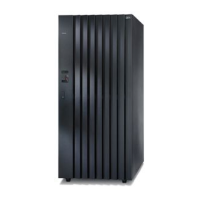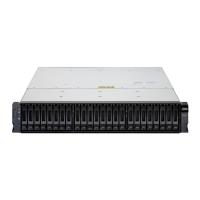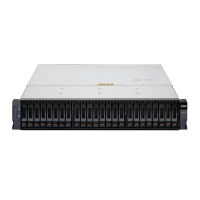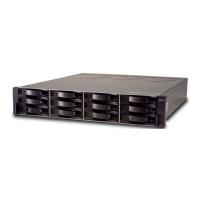Arrays
An array, also referred to as a managed array, is a group of storage devices that provides capacity for
a pool. An array generally consists of 8 drives that are managed as a Redundant Array of Independent
Disks (RAID).
Pools
A storage pool is a collection of storage that identies a set of storage resources. These resources
provide the capacity and management requirements for arrays and volumes that have the same
storage type, either xed block (FB) or count key data (CKD).
Volumes
A volume is a xed amount of storage on a storage device.
LSS
The logical subsystem (LSS) that enables one or more host I/O interfaces to access a set of devices.
Hosts
A host is the computer system that interacts with the storage system. Hosts dened on the storage
system are congured with a user-designated host type that enables the storage system to recognize
and interact with the host. Only hosts that are mapped to volumes can access those volumes.
Logical conguration of the storage system begins with managed arrays. When you create storage pools,
you assign the arrays to pools and then create volumes in the pools. FB volumes are connected through
host ports to an open systems host. CKD volumes require that logical subsystems (LSSs) be created as
well so that they can be accessed by an IBM Z host.
Pools must be created in pairs to balance the storage workload. Each pool in the pool pair is controlled by
a processor node (either Node 0 or Node 1). Balancing the workload helps to prevent one node from doing
most of the work and results in more efcient I/O processing, which can improve overall system
performance. Both pools in the pair must be formatted for the same storage type, either FB or CKD
storage. You can create multiple pool pairs to isolate workloads.
When you create a pair of pools, you can choose to automatically assign all available arrays to the pools,
or assign them manually afterward. If the arrays are assigned automatically, the system balances them
across both pools so that the workload is distributed evenly across both nodes. Automatic assignment
also ensures that spares and device adapter (DA) pairs are distributed equally between the pools.
If you are connecting to a IBM Z host, you must create a logical subsystem (LSS) before you can create
CKD volumes.
You can create a set of volumes that share characteristics, such as capacity and storage type, in a pool
pair. The system automatically balances the volumes between both pools. If the pools are managed by
Easy Tier, the capacity in the volumes is automatically distributed among the arrays. If the pools are not
managed by Easy Tier, you can choose to use the rotate capacity allocation method, which stripes
capacity across the arrays.
If the volumes are connecting to a IBM Z host, the next steps of the conguration process are completed
on the host.
If the volumes are connecting to an open systems host, map the volumes to the host, add host ports to
the host, and then map the ports to the I/O ports on the storage system.
FB volumes can only accept I/O from the host ports of hosts that are mapped to the volumes. Host ports
are zoned to communicate only with certain I/O ports on the storage system. Zoning is congured either
within the storage system by using I/O port masking, or on the switch. Zoning ensures that the workload
is spread properly over I/O ports and that certain workloads are isolated from one another, so that they
do not interfere with each other.
The workload enters the storage system through I/O ports, which are on the host adapters. The workload
is then fed into the processor nodes, where it can be cached for faster read/write access. If the workload
is not cached, it is stored on the arrays in the storage enclosures.
Chapter 1. Overview
13
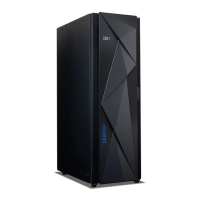
